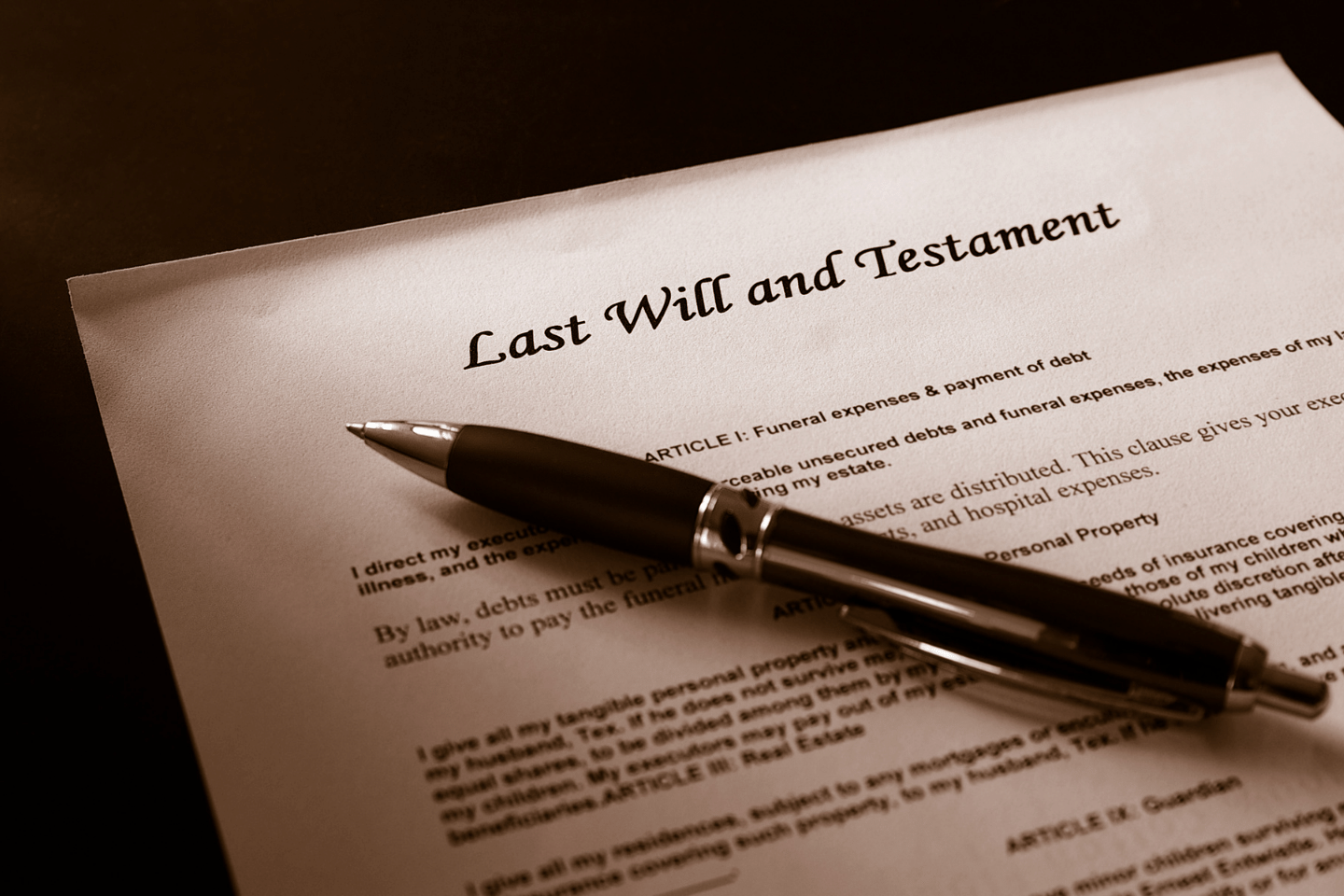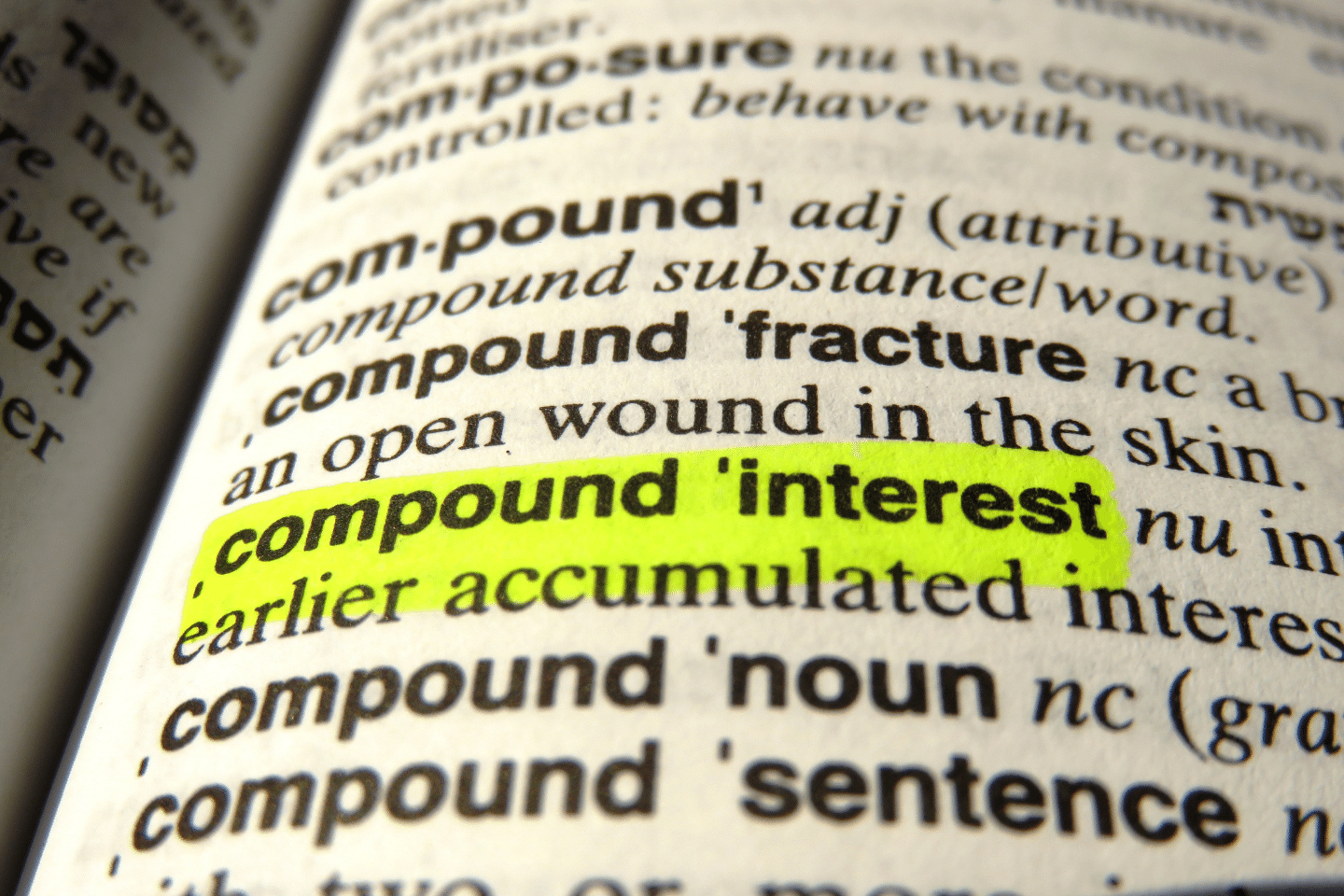Ingredients of a Good Personal Financial Plan – Part 1 Portfolio Management
Posted on:
Raffi Pailagian
MBA, BSc, DipFP
Financial Planner / Managing Partner
Ingredients of a Good Personal Financial Plan – Portfolio Management
Creating a good personal financial plan is a lot like baking a cake. If you leave one element out, or get the ratios wrong, it won’t rise properly and you won’t get the results you are hoping for.
Over the next couple of weeks we will be looking at the key components of a perfectly prepared financial plan, namely:
- Portfolio Management
- Property
- Mortgages
- Superannuation and SMSF
- Insurance
- Tax
- Estate Planning
Each of these elements needs to be given proper consideration in its own right, and in relation to each of the other components, so that you have a balanced whole.
Why an Investment Portfolio is Important
Each component of a good financial plan plays a role. In the case of your Investment Portfolio, there are a number of reasons it is important:
- Because these investments are more liquid than say, property, it means your money can be moved quickly to take advantage of unexpected opportunities
- Investing in stocks, bonds and the like, despite the ups and downs of the markets, can yield great returns, especially if managed by a thorough and knowledgeable financial planner
- A portfolio of investments can be structured to provide you with both growth and income which can help you achieve short and long term goals
- That word again – diversification. You don’t want all your eggs in one basket, and an investment portfolio allows you to diversify. Both within the portfolio and in your overall plan
What is Portfolio Management
Simply put Portfolio Management is the selection and supervision of a range of assets to meet the financial goals of an investor. But nothing is ever quite as simple as it seems.
In structuring a successful portfolio of investments there are trade-offs that need to be made. Risk vs return; active vs passive; growth vs income, and the list goes on.
Within a portfolio you can, and should, have a range of different asset classes. They may include shares, bonds, cash, commodities. But you may also have art, property trusts and other investment types.
How to Structure a Portfolio
There are a number of factors you need to take into consideration when deciding what asset classes, and within that, what specific investments, to include in your portfolio:
- Time – your time horizon is critical to decision making on investments. When you are just starting out, you have plenty of time to take risks and recover. You are also probably more likely to be looking at growth-based investments. If you are close to retirement you will be starting to look at income-generating investments with lower risk profiles, even if you have a natural leaning towards high risk investments. Five years out from retirement is not the time to bet the farm!
- Diversification – regardless of your level of risk tolerance, your portfolio should contain a diverse range of investments. Including assets with negative correlation[i] will help balance any potential falls. When assets have a negative correlation they typically move in opposite directions, so when one is falling, the other will be rising
- Risk – we’ve said it before, but it can’t be stressed highly enough. Every asset you include should be looked at through the lens of your own Risk Profile. If you haven’t read our article on Modern Portfolio Theory and the Efficient Frontier it will help you understand risk and why it is so important
- Goals – whether your goal is to have a specific net worth by retirement, or to generate income in the present, or even a little of both, you need to be clear on your goal as it will drive what investment opportunities you choose
- Ethics – ethical investing is becoming more and more important to many investors[ii]. You may have grave concerns for the environment so investing in renewable energies rather than fossil fuels may appeal. Perhaps you have concerns about working conditions in developing economies, so certain companies might not be suitable. Whatever your concern, investing in companies that address these concerns allows you a clear conscience
Types of Portfolios
There are as many types of Portfolios as there are investors, but there are some broad styles that you can use as a starting point.
- Income Portfolio – which, as the name suggests, focuses on income producing assets rather than growth. This type of portfolio is generally preferred in retirement.
- Defensive Portfolio – includes blue chip and household names. It will generally do well in bad times, but is unlikely to achieve the great highs of riskier investments,
- Aggressive Portfolio – investments in this type of portfolio are often in new markets. No household names here. While the returns can be great, so can the losses.
- Speculative Portfolio – Maybe the highest risk style of portfolio. This portfolio often includes technology and health-breakthrough investments.
- Hybrid Portfolio – the hallmark of this portfolio is good diversification across asset classes and a high degree of negative correlation.
- Tactical Portfolio – a portfolio structured to meet short or medium term needs, rather than long term goals.
- Strategic Portfolio – A portfolio specifically structured for long-term needs, typically to build assets for retirement.
Of course, any portfolio can, and possibly should, incorporate all of the above types of investment strategies. Over the lifetime of your portfolio, you may move from Speculative, through Aggressive to Defensive as you move from wealth building to income generating in retirement. The beauty of investing is the ability to rebalance as your needs change.
Finally…
Whatever the makeup of your Portfolio is, it is important to keep a close eye on market shifts, the world economy, the political climate, and even natural disasters and weather events. All of these can impact the performance of your portfolio.
This is why it is important to have an experienced, qualified financial planner you can trust. Because it’s not just about what to buy, but when, as well as how it fits with the rest of your financial plan.
In our next article, we will look at the role of Property in your Financial Plan. From your family home to investment properties, we will help you understand when and how to invest.
When you want to chat about getting started on a Financial Plan, or looking at the effectiveness of the one you already have, please contact us on 02 9976 3388 or click below and we’ll be in touch:
Interested in knowing more?
[i] https://corporatefinanceinstitute.com/resources/knowledge/finance/negative-correlation/
[ii] https://www.afr.com/companies/financial-services/ethical-investments-soar-to-nearly-1-trillion-20190702-p5239b
Related Posts

Investing In A Low Interest Rate Environment
Almost unbelievably, the last time there was a rate rise in Australia was November 2010, when the rate went from 4.5% to 4.75%. It’s been…
Read More
Super Death Benefit Tax
In Australia, superannuation is a nest egg many rely on for a comfortable retirement, but what happens to your super savings if you pass away?
Read More
The Concessional Contributions Cap
Understanding the concessional contributions cap can be a powerful tool for building retirement savings & maximising your super
Read More
Downsizer Contributions
What Is the downsizer contribution concession and why could this be relevant to you if you’re nearing retirement?
Read More
Risk Profiling
Risk Profiling is possibly the most important but often the most misunderstood and overlooked element when investing
Read More
How To Use Debt To Create Wealth
Not all debt is created equal. In fact, if you’re careful and think about it strategically, you can actually use debt to create wealth
Read More
Looking for a Home Mortgage?
Developing a good understanding of the key concepts, before looking at specific mortgage products, can help with fast tracking the selection process.
Read More
What Is Refinancing?
What is refinancing, when should you do it, does refinancing impact your credit rating, & is there anything else you need to know?
Read More
Financial Wellbeing
It’s easy to assume higher income means more financial wellbeing, and there is a strong correlation, but it is not the only factor at play.
Read More
Why Use A Mortgage Broker
With a wealth of information at all our fingertips thanks to the internet, you might wonder why use a mortgage broker?
Read More
Reasons To Refinance
With interest rates rising, it’s worth understanding how you can benefit by going to the trouble of refinancing.
Read More
Tax Deductions On Investment Property
Property is a popular investment asset, particularly in Australia, due to whole host of attractive benefits which include the allowable tax deductions on investment property
Read More
Tax Bracket Creep
We thought this might be a good time to take a look at the current income tax system and how you might be able to mitigate its effect on your take home income.
Read More
Home Mortgage Rates
With the significant increase in Home Mortgage Rates over the last 10 months, what options are there to minimise their impact?
Read More
How Much Do You Need to Retire?
If you feel like the answer to this question is a constantly moving target, you’re right. Working out how much you need to retire can be a complicated task.
Read More
Sustainable Investing
So what is sustainable investing, how can it help your bottom line & does it makes sense for more people to be considering?
Read More
Estate Planning
You probably have at least a vague idea about how you would like your assets, or your ‘estate’, to be divided amongst your family, loved ones and other potential beneficiaries, but you won’t be there to oversee what happens.
Read More
5 Small Business Strategies
There is a temptation in business to review small business strategies at the beginning of the new financial year, but sometimes a better choice can be the new calendar year.
Read More
Financial Planning For A Great Year
With the current high inflation, high interest rate environment, it has never been more important to take a serious look at your financial position
Read More
Retirement Planning For Small Business Owners
Retirement planning for small business owners can be much more complex than for employed people, due to a selection of factors.
Read More
Applying for a Mortgage
Applying for a mortgage is both exciting and scary, but there are a few things you should know, that can move the needle away from scary, towards exciting
Read More
Downsizing Before Retirement
This is a tricky question to answer because it impacts your lifestyle and your family as well as your finances. So there are a number of things to consider when weighing this decision.
Read More
Home Loan Mortgage Rates
Buying a home is usually the single most significant financial decision a person makes. With no end in sight for the predicted home loan mortgage rates rises, reviewing your home loan strategy makes a great deal of sense.
Read More
Small Business Insurance
There’s no doubt about it, running a small business is tough. Not only do you need to manage the business, but you need to think about the inherent risks and how you might manage those should the worst happen.
Read More
Estate Planning For Business Owners
Whether it is a family run business, partnership, or a company structure, you need to determine how ownership and running of the business will work should you not be available.
Read More
Why Start A Business?
One of the key things to remember when you delve into the waters of setting up your own business, is that you are working towards future goals.
Read More
Cashflow Tips
So what can we do to manage our finances as effectively as possible in this current environment?
Read More
Family Business Succession Planning
One of the most important things you can do as a family business owner is succession planning. You haven’t spent years of your life building a successful business only to have it fall over when you want to retire, or are no longer able to run it.
Read More
Investing in Property
Owning your own home has long been known as the Great Australian Dream, but these days, investing in property seems to come a pretty close second.
Read More
Keeping Up With The Joneses
The Keeping Up With The Joneses Mindset Can Have A Devastating Effect On Your Finances & Result In Insufficient Funds To Support You In Retirement
Read More
Get Rich Quick Schemes
High returns usually come with high risk, so when a scheme sounds too good to be true, it probably is!
Read More
Insurance Cover
Australia has certainly been through the wringer over the past three years. As confronting as it may be, it is essential to be prepared for the unexpected & understanding what insurance cover you need is a good start point
Read More
Quarterly Economic Update
As bad as this might seem, Australia still has one of the lowest inflation rates among OECD nations, beaten only by Japan and Switzerland, at the bottom of the inflation table
Read More
Saving for Retirement?
Saving for Retirement or Supporting Your Children? There are ways to do both & still ensure you have enough to retire comfortably, but it requires a little bit of planning
Read More
What is Inflation?
So what is inflation? It’s a complex beast & understanding the impact it can have will help you make wiser financial decisions.
Read More
Financial Fraud
Personal and financial fraud is on the rise. 11% of Australians experienced some form of fraud in 2021 & losses due to investment fraud were up 119.6% compared to the same period in 2020.
Read More
Saving For A House Deposit?
Should you invest your house deposit savings? This article investigates the pros & cons through a mini case study.
Read More
Inheritance & Movement Of Wealth
Australians pass on average $561,000 to their heirs, almost four times the global average of $148,000, with two in every three Australians planning to leave an inheritance.
Read More
Inflation & The Cash Rate
What is the Cash Rate & how will the changes applied today impact inflation and your financial situation?
Read More
2022-23 Federal Budget Highlights
The Federal Government has delivered a big-spending 2022 budget, taking immediate steps to reduce cost of living pressures for working Australians while implementing a range of massive infrastructure and defense spending measures.
Read More
Working from Home – Tax Optimisation Opportunities
Working from home and not sure what tax optomisation opportunities may be available to you, well this short article would be worth reading
Read More
Digital Assets – Pros & Cons For Investors
What are the advantages & disadvantages of digital assets compared with physical assets from an investors point of view?
Read More
BNPL vs Credit Cards – Which is Best?
BNPL (Buy Now Pay Later) or Credit Cards, what do they have to offer and which is the most financially efficient approach for consumers?
Read More
Portfolio Management During Turbulent Times
There’s no doubt we continue to live in turbulent times. Between the challenges and uncertainty of the pandemic, the instability in eastern Europe & ongoing supply chain issues, effective portfolio management is a prominent topic amongst investors.
Read More
Super Success For Women
While women earn less and spend less time in the workforce than men, sharply eroding their super contributions throughout their working lives, there are some simple steps women can take to boost their retirement savings.
Read More
Retirement Cashflow
Low-interest environments are great for borrowers but can be a disaster for retirees reliant on interest to provide retirement cashflow.
Read More
Stock Market Corrections
Stock Market Corrections can be an opportunity or a curse, depending on how you have set up your investments, are you taking full advantage of the opportunities?
Read More
Ethical Investing
Ethical Investing – what does this mean for you as an individual investor, what should you look for & why does it even matter?
Read More
The Great Resignation
What is the Great Resignation, is this a trend you should be part of & how is it impacting business owners as well as investors?
Read More
Transitioning To Retirement?
Transitioning to retirement & not sure of the most tax-efficient method or whether a TRIS is needed?
Read More
Investing In Real Estate
If you are going to or are investing in Real Estate, there are a few key things to consider…
Read More
Financial Freedom
What is Financial Freedom, how is it different from Financial Independence and how do you achieve it?
Read More
Financial Literacy
One thing it’s important to understand, is being highly educated does not necessarily mean you have good financial literacy. The two do not always go hand in hand
Read More
Bull vs Bear Market
Understanding the difference between a Bull & Bear Market, combined with the opportunities they present, can help greatly when formulating an investment strategy.
Read More
Stocks And Shares – What You Need To Know
So, when it comes to stocks and shares, what do you need to know before investing? Understanding the language can be a great first step.
Read More
What To Do With An Inheritance
Sometimes in life a small or not so small windfall comes our way. It can be tempting to rush out and spend it, but it is worthwhile taking the time to think about how best you can make this money work for you.
Read More
Financial Planning For Women
While preparing a financial plan is much the same for men and women, there are a few key things we need to factor in when developing financial plans for women.
Read More
Retirement Planning Strategies
It may seem obvious, but lack of planning is what can lead to disappointment come your retirement party.
Read More
Independent Financial Advice
How do you make sure the advice you are getting is independent and perhaps more importantly transparent?
Read More
Are Gifts Tax Deductible?
According to the Tax Office, not all gifts are created equal. Depending on the type of gift, and more specifically, to whom the gift is made, the tax implications of gift giving differ.
Read More
What Are Family Trusts?
These days setting up a Family Trust Fund is not just for the wealthy. Many small business owners are using the vehicle of a Family or Discretionary Trust to protect their family from potential loss, whilst at the same time taking advantage of tax benefits.
Read More
Portfolio Reviews & Effective Approaches
So, you have a financial plan in place. You’re set. Right? Well, for a while at least. While financial experts sometimes disagree on methods or theories, there is one thing they all agree on, this is not a set-and-forget activity.
Read More
June Tax Preparation Tips
Tax time is one of those chores of life that nobody enjoys. It can be a real pain. Not only do you have to scramble to find all the receipts and statements you have misplaced over the course of the year, but there is often a fear that you will end up with a great big, unexpected tax bill. Or even worse – get an audit notice.
Read More
Best Way To Begin Investing
Not sure what the best way to begin investing? For many people, the prospect of starting the investment journey is daunting. How much do I need? What should I invest in? How can I make sure I make the right decisions?
Read More
How To Build Your Investment Portfolio
How To Build Your Investment Portfolio – Assets, Risk & Return
Read More
The Compound Interest Formula
It’s likely you have likely heard this term the compound interest formula, bandied around a lot in financial circles.
Read More
The Impact Of Compound Interest
Almost unbelievably, the last time there was a rate rise in Australia was November 2010, when the rate went from 4.5% to 4.75%. It’s been…
Read More
How to be Financially Independent
We all strive for financial independence in retirement. But what if you could achieve…
Read More
How To Build Wealth In Your 50s
In your 50s, many people start to worry, even panic, that they have left it too late to start building the wealth they will need for their…
Read More
How To Start Investing – The Wealth Tank Concept
Almost unbelievably, the last time there was a rate rise in Australia was November 2010, when the rate went from 4.5% to 4.75%. It’s been…
Read More